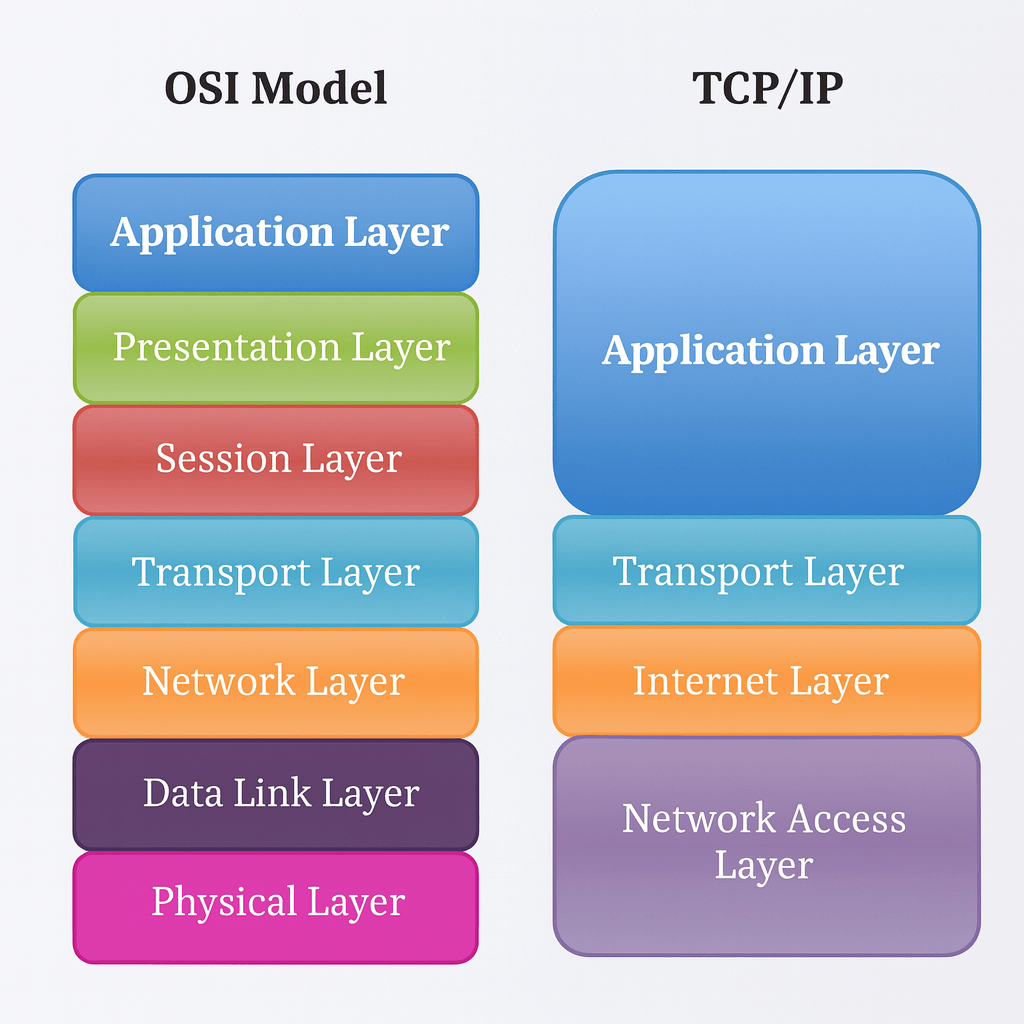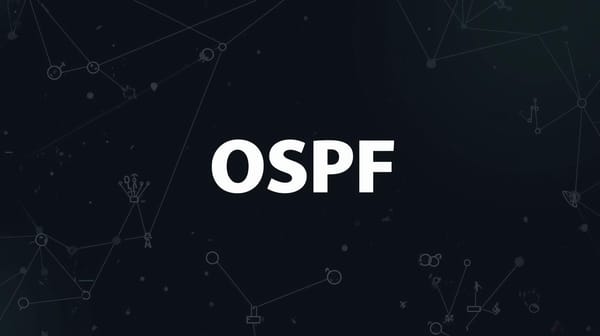Introduction to TCP/IP Networking: A Beginner’s Guide for CCNA
Learn the fundamentals of TCP/IP networking in this beginner-friendly CCNA guide. Understand how the TCP/IP model maps to OSI layers, how encapsulation works, and why it’s essential for Cisco certification and real-world networking troubleshooting.

Origins of the TCP/IP Suite
Although TCP/IP underpins the global internet today, it began as a DARPA-funded project in the 1970s to reliably interconnect heterogeneous networks. You trace its roots to ARPANET experiments, where packet switching, open interfaces, and vendor-neutral design were prioritized.
Researchers, led by Vint Cerf and Bob Kahn, defined internetworking through the Internet Protocol for routing across autonomous systems and the Transmission Control Protocol for reliable delivery, congestion control, and flow regulation.
As TCP/IP networking matured, iterative RFCs captured behavior, from segmentation and retransmission to checksum validation and port multiplexing.
The 1983 ARPANET cutover cemented these network protocols as the operational baseline. Subsequent NSFNET expansion, BSD integrations, and IETF stewardship drove global adoption.
You inherit a standards-driven, interoperable architecture engineered for resilience, scalability, and implementation independence.
The TCP/IP Model and Its Layers
While the OSI model offers a teaching aid, the TCP/IP model defines the standards you actually implement. You’ll use four TCP/IP model layers that map cleanly to real protocols and RFCs: Link, Internet, Transport, and Application. This protocol stack prioritizes interoperability, routing scalability, and end-to-end reliability without unnecessary abstraction.
- Link: Ethernet, Wi‑Fi. Framing, MAC addressing, and FCS.
- Internet: IP, ICMP, ARP/ND. Logical addressing, routing, and error signaling.
- Transport: TCP, UDP. Segmentation, multiplexing, flow/congestion control (TCP).
- Application: HTTP, DNS, SSH, DHCP. Service semantics, data formats.
| Layer | Core Functions | Example Protocols |
|---|---|---|
| Application | Naming, sessions, data formats | HTTP, DNS, SSH |
| Transport | Ports, reliability, multiplexing | TCP, UDP |
| Internet | Addressing, routing, fragmentation | IPv4/IPv6, ICMP |
| Link | Framing, media access, FCS | Ethernet, 802.11 |
Understand boundaries: keep addressing/routing on the Internet, reliability at Transport, and services at Application.
Encapsulation and Data Flow
You’ve mapped the TCP/IP layers; now see how they work on the wire through encapsulation and data flow.
You start with application data, then pass it to the transport layer, which adds a TCP or UDP header (ports, sequence numbers, checksums). The internet layer wraps it in an IP header (source/destination, TTL, protocol). The network access layer frames it with MAC addresses and an FCS, then encodes bits on the medium.
This encapsulation process defines clear boundaries, allowing devices to parse headers deterministically.
On transmit, each layer adds headers (and a trailer at Layer 2). On receive, peers decapsulate in reverse, validating checksums and addressing before delivering payloads upward.
Fragmentation, MTU, and retransmission policies govern reliability and efficiency. Mastering this flow underpins precise, standards-based network communication.
Mapping OSI to TCP/IP
Even with different layer counts and names, you can map OSI concepts cleanly onto the TCP/IP stack to align theory with implementation. In OSI vs TCP/IP, you’ll collapse OSI’s seven layers into four.
TCP/IP’s Application layer spans OSI Application, Presentation, and Session. Transport maps to OSI Transport (TCP/UDP, ports, reliability). Internet maps to OSI Network (IP, routing, ICMP). Network Access maps to OSI Data Link and Physical (Ethernet, framing, signaling).
You’ll validate this mapping by tracking encapsulation boundaries and control-plane vs data-plane roles. Standards bodies guide you: IETF defines TCP/IP protocols (RFCs), while IEEE defines LAN/MAN layers.
For CCNA 200-301, focus on how each TCP/IP layer provides services to the next layer, how headers align, and where troubleshooting logically begins and ends.
IPv4 and IPv6 Fundamentals
With the OSI-to-TCP/IP mapping in place, focus now shifts to the Internet layer’s core addressing: IPv4 and IPv6. You’ll compare IPv4 vs IPv6 to understand how IP addressing scales, routes, and secures packets end-to-end.
IPv4 uses 32-bit addresses (RFC 791); IPv6 uses 128-bit addresses (RFC 8200), enabling massive scale and simplified header processing.
- Addressing: IPv4 dotted-decimal vs IPv6 hexadecimal/colon; unicast, multicast; IPv6 adds anycast widely.
- Structure: IPv4 subnetting with masks/CIDR; IPv6 uses prefix lengths, SLAAC, and stable addressing with EUI-64 or privacy extensions.
- Neighbor Discovery: ARP in IPv4; ICMPv6 Neighbor Discovery replaces ARP and supports router/redirect functions.
- Changeover: Dual-stack, tunneling, and translation (e.g., NAT64/DNS64) guarantee coexistence and migration.
You’ll validate prefixes, scope (global/link-local), and uniqueness to maintain robust routing.
Core Protocols and Services
Foundations matter: core TCP/IP protocols and services coordinate transport, naming, discovery, and management so packets become reliable applications.
You rely on IP for routing, ICMP for control signaling (echo and TTL exceeded), and ARP/ND for resolving next-hop addresses.
At Layer 4, understand TCP vs. UDP: TCP offers connection-oriented reliability, sequencing, flow control, and congestion control; UDP provides minimal overhead for latency-sensitive flows.
DNS maps names to IPs, while DHCP automates address, gateway, and DNS assignment.
HTTP/HTTPS, SMTP, and FTP/SSH sit above, consuming transport services.
NTP aligns clocks for logs and security.
SNMP and Syslog expose management and telemetry.
Throughout, data encapsulation defines headers and payloads, preserving boundaries across hops.
Master packet structure, ports, timers, and RFC behavior to implement, secure, and troubleshoot networks.
Why TCP/IP Matters Today and Tomorrow
Although technologies evolve, TCP/IP remains the interoperable baseline that enables heterogeneous networks to operate at Internet scale. You rely on open IETF standards (RFCs) that guarantee routers, hosts, and services communicate predictably across LANs, WANs, and clouds.
For CCNA Network Fundamentals, TCP/IP ties concepts to practice addressing, routing, segmentation, and reliability so you can design, secure, and scale networks. It also anchors effective network troubleshooting, from packet capture to path analysis.
- Standardization: TCP, IP, ICMP, DNS, DHCP, and BGP/Routing RFCs deliver vendor-neutral interoperability and extensibility.
- Scalability: IPv4 with NAT and IPv6 with vast addressing keep growth sustainable.
- Observability: Headers, flags, and control messages expose precise diagnostics.
- Future-proofing: QUIC, TLS, segment routing, and programmable data planes evolve atop IP.
Master it now; apply it everywhere.
Final Thoughts
You’ve explored TCP/IP from its DARPA roots to today’s standards-driven internet. You understand the four-layer model, encapsulation, and OSI mapping. You can distinguish IPv4 from IPv6, and you know how core protocols—IP, ICMP, TCP, UDP, DNS, DHCP, HTTP(S), and routing—interoperate. With this foundation, you can design, secure, and troubleshoot networks, validate behavior with RFCs, and plan for IPv6 adoption, zero trust, and automation. Keep learning by reading standards, capturing packets, and testing configurations.



